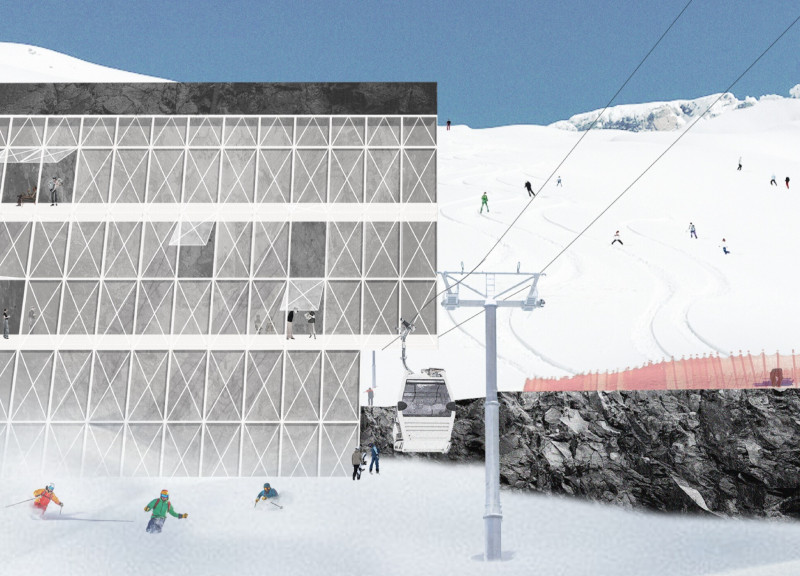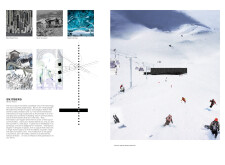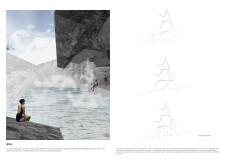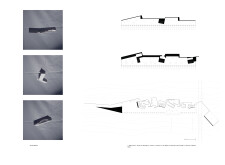5 key facts about this project
### Overview
Snjóberg is located in a mountainous, snowy region, conceived to facilitate interaction with the natural environment while also serving as a refuge from technology-driven lifestyles. The design aims to bridge the gap between the raw beauty of the wilderness and human habitation through a combination of a hostel, spa, and communal areas, thereby fostering recreational and social interactions among visitors.
### Material Integration and Sustainability
The architectural strategy emphasizes the use of local and indigenous materials that resonate with the geological context of the site. Native basalt stone serves as a durable and visually coherent choice, while a wood frame structure pays homage to traditional Nordic architecture, creating inviting spaces. Additionally, elements inspired by glacial ice incorporate water features into the design without detracting from sustainability principles. These selections promote environmental stewardship and reflect regional identity, establishing a strong connection between the built environment and its natural surroundings.
### Spatial Dynamics and User Engagement
The spatial organization prioritizes movement and interaction, designed to enhance user experience across various functional areas. The hostel features communal amenities that encourage social interaction while maintaining private spaces for guests. Central to the design is a hot spring and spa facility that adapts to the topography, allowing for both relaxation and immersion in the landscape. The angular forms of the architecture echo the contours of the mountains, offering a modern interpretation of classic mountain lodge aesthetics while promoting a sense of place. Pathways and visual corridors strategically integrate indoor and outdoor experiences, facilitating continuous engagement with the scenic environment.






















































